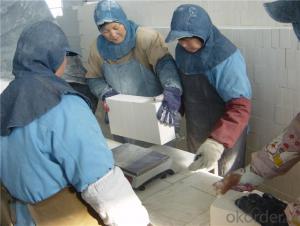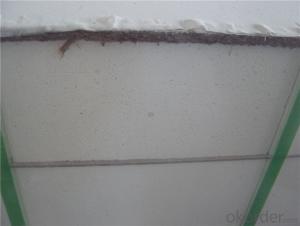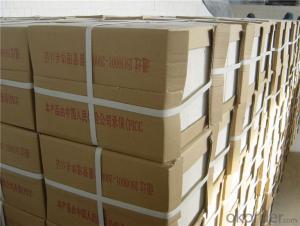High-Temperature Light Weight Fire Clay Insulation Bricks
- Loading Port:
- Shanghai
- Payment Terms:
- TT OR LC
- Min Order Qty:
- 1 m.t.
- Supply Capability:
- 1000 m.t./month
OKorder Service Pledge
OKorder Financial Service
You Might Also Like
Thermal Insulation Fire Clay Brick
Refractory brick is a block of refractory ceramic material used in lining furnaces, kilns, fireboxes, and fireplaces.
We provide high quality Refractory Fire Bricks that are used on wide range in the various industries like Cement, Glass and Steel. Refractory Fire Bricks are provided as per the quantity and specifications required by the customers. We provide an extensive range of Refractory Fire Bricks at reasonable prices that depend upon the quantity ordered.
Application
Insulating Fire Brick are used for the lining of converter, alternating current arc furnace, direct Current arc furnace and the ladle slag line, etc.
Company Advantage
(1)Long Insulating Fire Brick manufacture history: 25 years manufacturer
(2)Advanced equipment
(3)Diversification of production standards: ISO ANSI FEPA JIS ASTM
(4)Flexible payment: T/T L/C D/P D/A
(5)Professional marketing team and after-sale service
Insulating Fire Brick main feature:
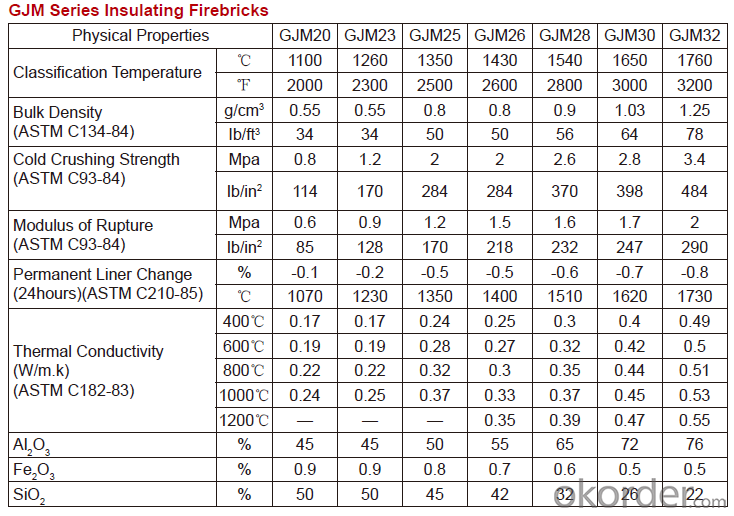
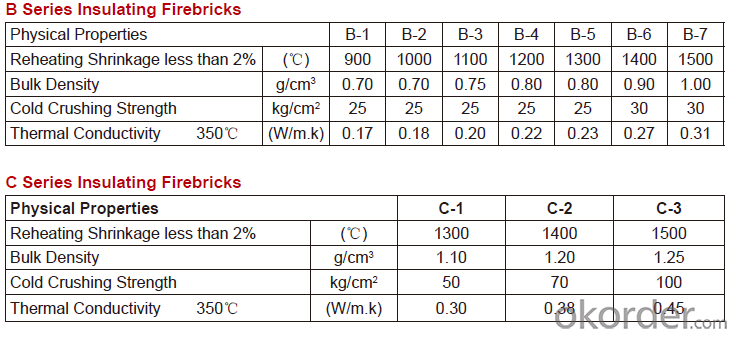
Equipment
1 unit of Ceramic Abrasive (SG Abrasive) pilot production line
2 units of Compact grain Abrasive pilot production lines
1 unit of high-end coated abrasives (abrasive cloth) production line
2 units of Boron Carbide production lines
3 large flexible crushing and sieving lines for grit production lines
6 units of 5000KVA-10000KVA dumping type electric arc furnaces for Brown Fused Alumina fusion
Q1 What’s the transport method?
A1 FCL delivery goods with wooden pallet or wooden case by sea; If LCL delivery, must with wooden case; Sometimes need open top, flat rack or bulk cargo.
Q2 What’s the required payment term?
A2 Generally 30% TT as the prepayment, 70% TT before delivery. If need, 100% Irrevocable Letter of Credit or negotiation.
Q3 Which country are our products exported to?
A3 Apart from entire Chinese market, the US, Russia, Japan, Korea, Australia and some Southeast Asian Nations.
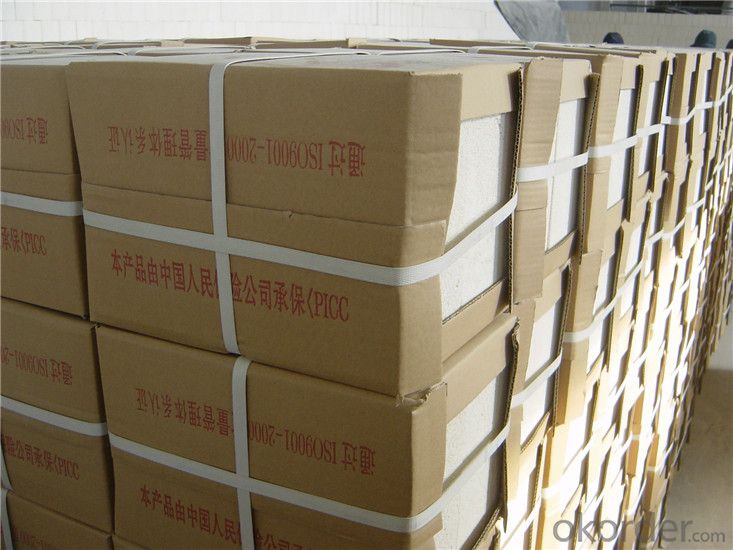

- Q:Is it possible to cut insulating fire bricks to fit custom shapes?
- Yes, it is possible to cut insulating fire bricks to fit custom shapes. Insulating fire bricks are made from lightweight materials such as ceramic fiber, which can be easily cut or shaped using various tools. Common methods for cutting insulating fire bricks include using a saw, knife, or even a hot wire cutter. It is important to follow proper safety precautions and wear protective gear when cutting these bricks, as the cutting process may produce dust or sharp edges. With the right tools and techniques, it is possible to cut insulating fire bricks to fit any desired custom shape.
- Q:Can insulating fire bricks be cut to custom sizes?
- Yes, insulating fire bricks can be cut to custom sizes. These bricks are made from lightweight materials such as ceramic fibers, which make them easier to shape and cut according to specific requirements.
- Q:Can insulating fire bricks be used in chimney construction?
- Yes, insulating fire bricks can be used in chimney construction. These bricks have high heat resistance and low thermal conductivity, making them suitable for lining chimneys and other high-temperature applications. They help to insulate the chimney and prevent excessive heat transfer, reducing the risk of structural damage and improving energy efficiency.
- Q:Are insulating fire bricks resistant to gas permeation?
- Generally, insulating fire bricks exhibit resistance to gas permeation. They possess a low porosity design, minimizing open spaces for gas passage. This attribute renders them highly effective in preventing gas permeation. Moreover, insulating fire bricks are commonly constructed from materials like alumina, known for their exceptional resistance to high temperatures and chemical reactions. This further bolsters their resistance to gas permeation. In conclusion, insulating fire bricks are a dependable option for minimizing or preventing gas permeation in various applications.
- Q:Is sintering insulation brick good or concrete porous brick good?
- As with the expansion screw, it depends on what to connect, and go in is no problem, the key is that the carrying capacity is not very high, if you do steel support, pull and so on, it is recommended to use concrete.
- Q:Can insulating fire bricks be used as a backup insulation material?
- Yes, insulating fire bricks can be used as a backup insulation material. Insulating fire bricks are designed to have low thermal conductivity, which means they are effective at reducing heat transfer. This makes them suitable for use as a backup insulation material in applications where maintaining temperature stability is crucial. They are commonly used in industrial furnaces, kilns, and other high-temperature environments where the primary insulation material may fail or need additional support. Insulating fire bricks can provide an extra layer of insulation, helping to prevent heat loss and improve energy efficiency. Additionally, they are durable and able to withstand high temperatures, making them a reliable choice for backup insulation.
- Q:What is the recommended curing time for insulating fire bricks?
- The recommended curing time for insulating fire bricks can vary depending on several factors such as the type of brick, the specific application, and the manufacturer's instructions. However, in general, it is advisable to allow a curing time of at least 24 to 48 hours for insulating fire bricks. This allows the bricks to dry and harden properly, ensuring their stability and performance in high-temperature environments. It is important to follow the manufacturer's guidelines and recommendations for curing time to achieve the best results. Additionally, factors such as humidity, temperature, and ventilation can also influence the curing process, so it is important to consider these factors when determining the appropriate curing time for insulating fire bricks.
- Q:Can insulating fire bricks be used in the construction of glassware production furnaces?
- Yes, insulating fire bricks can be used in the construction of glassware production furnaces. These bricks have excellent thermal insulation properties and can withstand high temperatures, making them ideal for creating a well-insulated and efficient furnace for glass production.
- Q:Are insulating fire bricks resistant to ultraviolet (UV) radiation?
- Insulating fire bricks are typically not resistant to ultraviolet (UV) radiation. UV radiation can cause degradation and discoloration of materials over time, especially those that are not specifically designed to withstand it. Insulating fire bricks are primarily used for their high temperature resistance and insulating properties, rather than their ability to withstand UV radiation. Therefore, if exposed to prolonged UV exposure, insulating fire bricks may experience reduced performance, cracking, or deterioration. It is important to consult the manufacturer's specifications or guidelines to determine the specific UV resistance of insulating fire bricks, as some manufacturers may offer specialized products that are more UV resistant.
- Q:Are insulating fire bricks resistant to slag attack?
- Insulating fire bricks have a general resistance to slag attack. They are made from lightweight and porous materials, like alumina, silica, and other refractory materials. These bricks are designed to provide excellent insulation and high-temperature resistance in various industrial applications, such as furnaces, kilns, and incinerators. When we talk about slag attack, we are referring to the corrosion or erosion caused by molten slag. This slag is a byproduct of certain industrial processes, such as metal smelting or coal combustion. It can be highly corrosive and damage refractory materials, including fire bricks. However, insulating fire bricks are specifically formulated to resist slag attack. They have a composition and structure that allows them to withstand the corrosive nature of molten slag. This helps prevent erosion and maintain their insulating properties over time. Furthermore, insulating fire bricks can have different levels of slag resistance, depending on their specific composition and manufacturing process. Some fire bricks may even have additives or coatings to enhance their resistance to slag attack. It's important to note that while insulating fire bricks offer good resistance to slag attack, the severity and duration of exposure to slag can impact their performance. In highly corrosive environments or prolonged exposure to molten slag, even the most resistant fire bricks may eventually experience some degradation. Overall, insulating fire bricks are a reliable choice for applications where resistance to slag attack is necessary. However, it's always recommended to consult with a refractory engineer or supplier to ensure the appropriate selection of fire bricks based on the specific conditions and requirements of the industrial process.
1. Manufacturer Overview |
|
|---|---|
| Location | |
| Year Established | |
| Annual Output Value | |
| Main Markets | |
| Company Certifications | |
2. Manufacturer Certificates |
|
|---|---|
| a) Certification Name | |
| Range | |
| Reference | |
| Validity Period | |
3. Manufacturer Capability |
|
|---|---|
| a)Trade Capacity | |
| Nearest Port | |
| Export Percentage | |
| No.of Employees in Trade Department | |
| Language Spoken: | |
| b)Factory Information | |
| Factory Size: | |
| No. of Production Lines | |
| Contract Manufacturing | |
| Product Price Range | |
Send your message to us
High-Temperature Light Weight Fire Clay Insulation Bricks
- Loading Port:
- Shanghai
- Payment Terms:
- TT OR LC
- Min Order Qty:
- 1 m.t.
- Supply Capability:
- 1000 m.t./month
OKorder Service Pledge
OKorder Financial Service
Similar products
New products
Hot products
Related keywords
